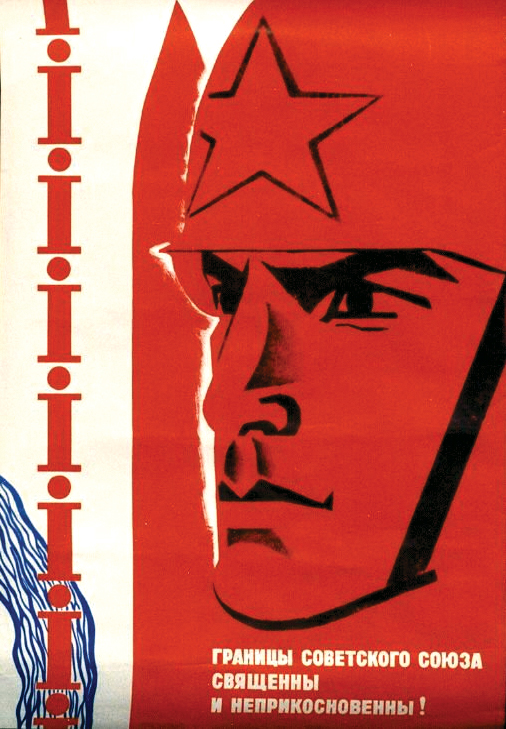
A. Dobrov, The Borders of the USSR Are Sacred and Inviolate, 1969
http://museumofrussianicons.org/en/special-exhibits/upcoming/darker-shades-of-red/
The new exhibition, Darker Shades of Red offers visitors a rare opportunity to revisit and analyze the Cold War period through the exploration of the Soviet Union’s official brand. Strikingly graphic and explicit in its socialist message, the collection reveals the economic, social and political ideology of the Soviet Union from the mid 1940s to 1990.
The evolution of Soviet poster art can be traced back to the two oldest traditions of Russian graphic art—the lubok and the painted religious icon. Dating back to the early seventeenth century, the lubok (an illustrated woodcut or print) typically combined images with text.
From the Bolshevik Revolution onward, the poster has been an influential source for Soviet dogma. Leaders consigned a high priority on communicating the ideas of revolution, socialism and social responsibility to its citizenry. Posters were used to direct and manipulate mass consciousness in accordance with Communist Party objectives. Allegorical images of Soviet leaders, soldiers, workers, and peasants were common heroic themes; images of machinery symbolized productivity in industry and farming. Locomotives, sputniks and rockets insinuated a collectivized sense of progress and achievement. This nationalistic information was communicated to the public through vibrant compositions combining figures, text (often poetry) and geometric blocks of strong color.
Post World War II tensions between the Soviet Union and the West lead to the beginning of the Cold War. Fear of nuclear proliferation and anti-west attitudes were often reflected in Soviet posters during the decades that followed. Civil defense posters explained how to prepare for a nuclear attack. Caricatures of American and British leaders depicted the West and its political structure as the enemy of the Soviet people.
Propaganda images also trickled down into the homes and day-to-day lives of the people. All schools, shops, factories, apartment buildings and public spaces were speckled with Soviet imagery. In this closed society, there were no competing images; people were exposed only to what was seen as fulfilling the goals of the Party. Common objects such as postcards and even children’s books had to reinforce Communist objectives. By observing these official images, we are given an insider’s perspective into life in a authoritarian, autocratic society.
The objects in Darker Shades are drawn from the private collection of Gary Hollingsworth, a Florida art restorer who traveled extensively in the former Soviet Union. The exhibit includes 55 original Soviet posters (w/ translations) and assorted ephemera like medals and orders, statuettes and factory banners.